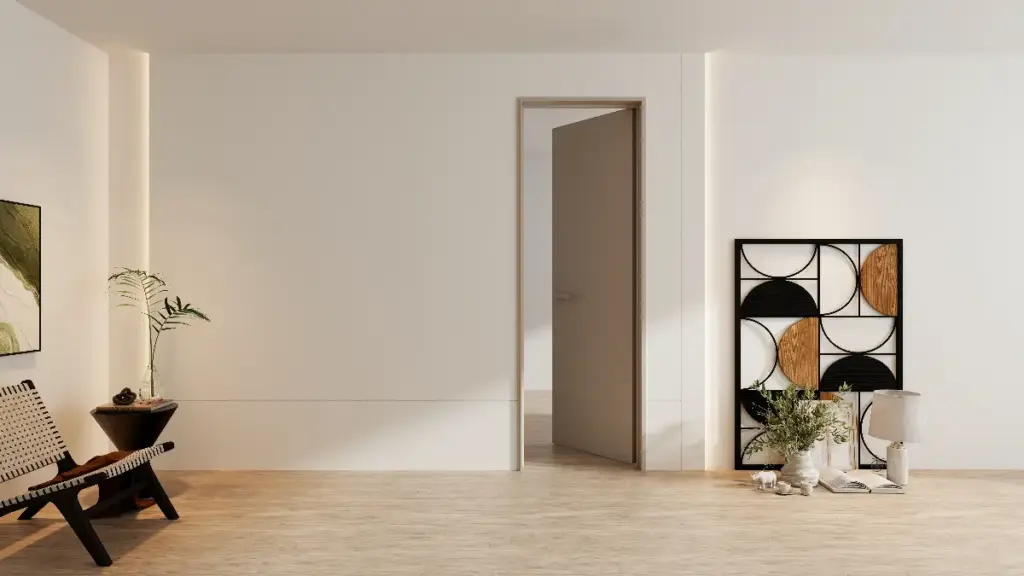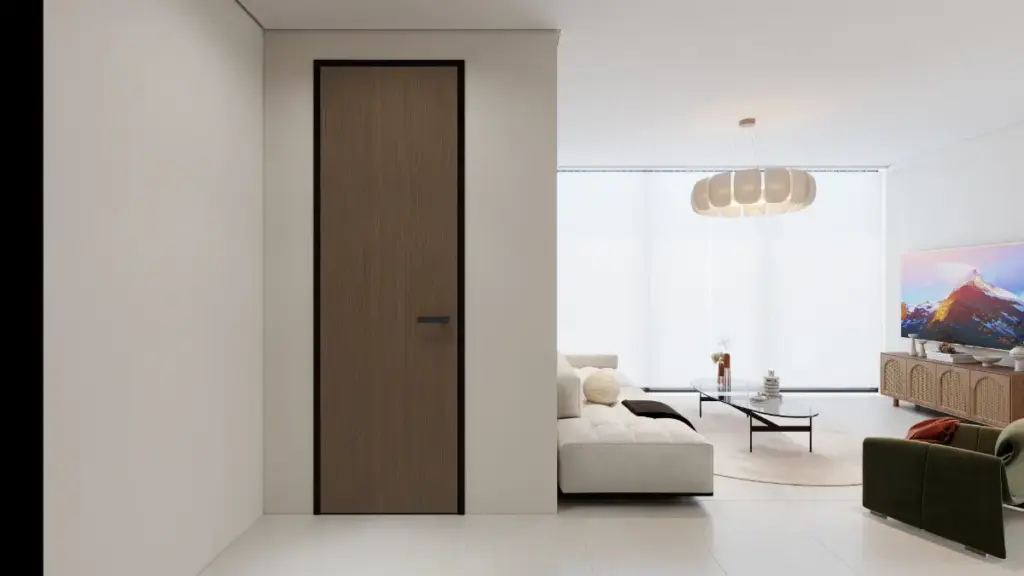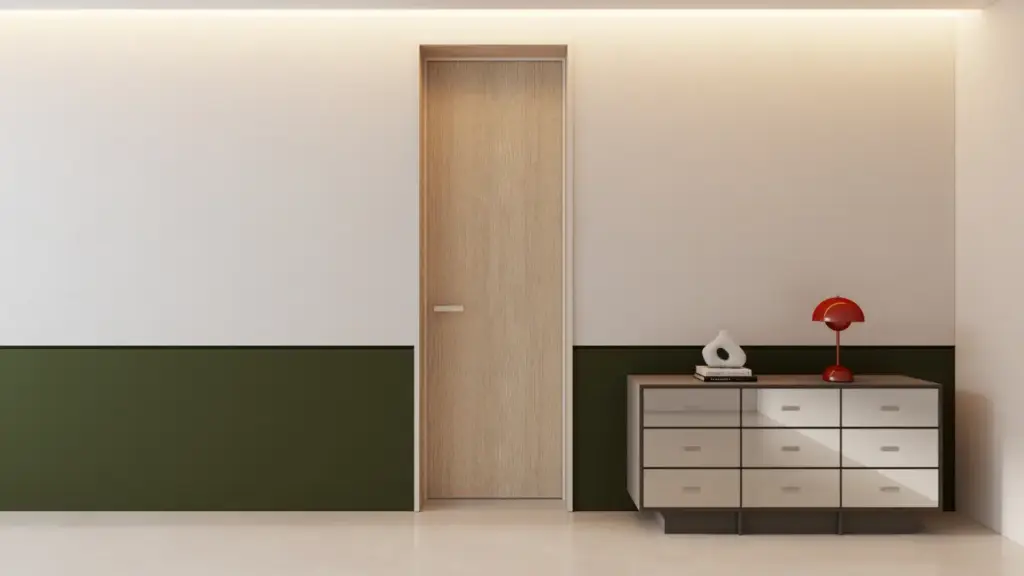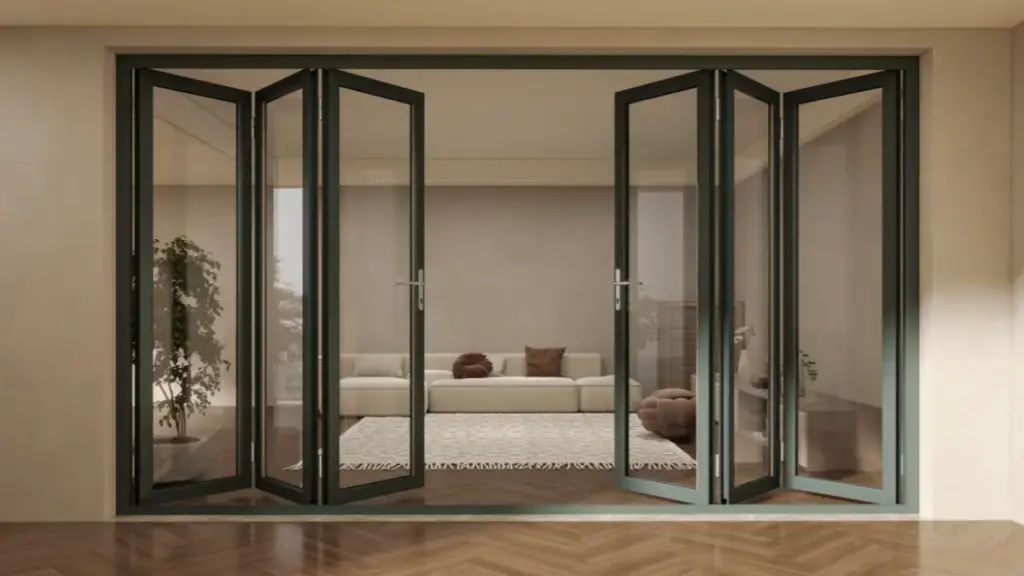Aluminum door frames have become a go-to choice for both residential and commercial projects. Their strength, versatilità, and energy efficiency make them highly sought after, but the variety of aluminum door frame profiles available can leave some feeling overwhelmed. Whether you’re a contractor, architetto, or a homeowner looking to upgrade your doors, knowing the different aluminum door frame profiles helps you choose the right one for your project’s style, funzionalità, and performance.
In questa guida, we’ll walk through the most common aluminum door frame profiles, their specialized applications, and how to select the ideal profile for your needs.
IL 5 Most Common Types of Aluminum Door Frame Profiles

Aluminum door frames come in a range of profiles, each designed to meet specific needs. Let’s explore the most common types.
Square Profiles
Square aluminum door frame profiles are among the most straightforward and widely used. These profiles have clean, sharp edges and a square cross-section. They are popular for their minimalist look and robust construction, making them suitable for both interior and exterior doors.
One of the biggest advantages of square profiles is their ease of installation. They can accommodate a variety of door types, from standard hinged doors to more modern sliding and folding systems. The simple design also makes them highly cost-effective, which is why they are often chosen for commercial properties.
Hollow Profiles
Hollow profiles are a popular choice for modern architectural designs. These frames have a hollow cross-section, which not only reduces the overall weight of the door frame but also enhances its insulation properties. A hollow profile allows for the incorporation of thermal breaks, improving the frame’s energy efficiency.
This type of profile is ideal for high-traffic areas or for projects where a balance between strength and insulation is crucial. Hollow profiles are frequently used in office buildings, scuole, and other commercial settings where energy efficiency is a priority.
T-Profiles
T-profiles are characterized by their T-shaped cross-section, providing additional strength and stability. These frames are particularly useful in areas that require heavy-duty doors, such as industrial buildings or large commercial entrances.
The shape of T-profiles allows for enhanced structural integrity, which makes them more resilient to wear and tear. They also provide more space for weather seals, offering better protection against the elements. While not as common in residential buildings, T-profiles are excellent for doors that need to withstand heavy use and extreme weather conditions.
U-Profiles
U-profiles, with their U-shaped cross-section, are commonly used in doors that need extra stability and resistance. These profiles are often seen in doors that are subjected to high pressure, such as fire-rated doors or doors used in secure facilities.
The U-profile design also offers a higher degree of customization. With a variety of thicknesses and materials available, U-profiles can be tailored to meet the specific needs of the building and its intended use. They are also often used in combination with double glazing or other energy-efficient components to improve overall performance.
Flat Profiles
Flat profiles are, come suggerisce il nome, thin and flat, offrendo un elegante, contemporary appearance. These profiles are favored for modern architectural projects where the visual aesthetics of the door frame play a critical role.
While flat profiles may not have the structural strength of some of the other profiles discussed, they can still support lighter doors effectively. These profiles are ideal for residential applications, particularly when a modern, streamlined look is desired.
Types of Aluminum Door Frame Profiles Based on Door Types

Different types of doors require different profiles. Let’s take a look at how the frame profile you choose can impact the door’s functionality.
Sliding Door Profiles
Porte scorrevoli are increasingly popular in both residential and commercial buildings, offering a seamless way to connect indoor and outdoor spaces. The profile of the frame plays a crucial role in the smooth operation of the door.
Aluminum sliding door frames are designed to handle the weight and movement of large glass panels. These profiles often incorporate tracks or rollers to allow for smooth sliding, with reinforced edges for durability. For enhanced security and weather resistance, sliding door profiles may also feature multi-chamber construction.
Bi-Fold Door Profiles
Bi-fold doors are an excellent choice for spaces that require flexibility. These folding doors open up to create a wide, apertura senza ostacoli, ideal for patios, balconies, or as room dividers. The aluminum profiles used for bi-fold doors are usually designed to be slim yet strong, ensuring that the doors fold smoothly and securely.
Bi-fold door frames often come with integrated hinges and multi-point locking systems for enhanced safety. The profile must be strong enough to support multiple panels and heavy glass, while still being narrow enough to create a minimalistic appearance.
Pivot Door Profiles
Pivot doors are known for their striking design and functionality. These doors rotate on a central axis, offering a wide opening while maintaining a sleek look. Aluminum pivot door profiles need to be engineered to handle the rotational forces applied during use.
The frame design often includes heavy-duty hinges and reinforcement to accommodate the door’s weight. Pivot doors are often used in modern architectural designs where the door itself is a focal point of the space. The profile for pivot doors is typically larger and more robust than those used for other types of doors.
Special Features in Aluminum Door Frame Profiles

While the basic profile of an aluminum door frame is important, additional features can make a huge difference in performance and longevity.
Thermal Break Profiles
One of the most significant improvements in aluminum door frame technology is the thermal break. A thermal break is a layer of insulating material that separates the internal and external sections of the frame, reducing heat transfer.
This feature is especially beneficial in areas with extreme temperatures, as it helps to prevent heat loss in winter and keep interiors cool in the summer. Thermal break profiles can greatly improve the energy efficiency of buildings, contributing to reduced heating and cooling costs over time.
Corrosion-Resistant Profiles
Aluminum is naturally resistant to corrosion, but for environments with high humidity or exposure to saltwater (such as coastal areas), additional corrosion protection may be necessary. Corrosion-resistant aluminum profiles are often treated with protective coatings to enhance their durability.
These profiles can help ensure that doors remain functional and aesthetically pleasing, even after years of exposure to harsh environmental conditions. Some coatings, like anodizing or powder coating, also offer added resistance to scratches and other physical damage.
Customizable Aluminum Profiles
Custom aluminum profiles provide the flexibility to meet unique design requirements. Whether you need a specific finish, custom dimensions, or a specific functional feature, customizable profiles allow for tailored solutions.
Many manufacturers like Opuo, now offer the ability to create bespoke aluminum door frame profiles, which is especially useful for large-scale commercial projects or specialized residential designs. This flexibility makes aluminum an ideal choice for a wide range of architectural styles.
How to Choose the Right Aluminum Door Frame Profile for Your Project
Choosing the right aluminum door frame profile depends on several factors, including the type of door, preferenze estetiche, and performance requirements. Consider the following when selecting your profile:
- Door Functionality: Is the door going to be used frequently? Sliding or bi-fold doors might need stronger, more durable profiles. For a pivot door, ensure the profile can accommodate the weight and movement.
- Efficienza energetica: Thermal break profiles are key for energy-conscious projects, as they help to minimize heat loss or gain.
- Durata e manutenzione: In high-traffic areas or harsh environments, corrosion-resistant profiles and additional coatings can improve longevity.
- Design Considerations: For modern, minimalistic designs, flat or square profiles work best. For a more traditional or robust look, profiles like T or U may be more appropriate.
Energy Efficiency of Aluminum Door Frame Profiles

Aluminum door frames, while strong and lightweight, can be prone to heat transfer. To combat this, thermal break technology is used to insert insulating materials between the internal and external sections of the frame, reducing heat loss in winter and preventing heat gain in summer. This feature enhances the energy efficiency of buildings, helping to lower heating and cooling costs.
In addition to energy benefits, aluminum frames often undergo corrosion-resistant treatments, such as anodizing or powder coating, to ensure longevity. These treatments protect the frame from environmental factors like moisture, which is particularly important for coastal or industrial locations.
Maintenance Tips for Aluminum Door Frame Profiles
Aluminum door frames are low-maintenance, but regular care is essential to ensure long-lasting performance. Here are key maintenance tips:
- Pulizia: Clean frames with a mild detergent and soft cloth to remove dirt and debris. Avoid harsh chemicals that could damage the surface.
- Corrosion Check: Inspect for signs of corrosion, especially in coastal or industrial areas. Apply protective coatings if necessary.
- Seal Maintenance: Check seals regularly for wear. Replace damaged seals to maintain insulation and weather resistance.
- Lubricate Moving Parts: For sliding or bi-fold doors, lubricate tracks and hinges with a silicone-based lubricant to ensure smooth operation.
- Inspect for Damage: Look for physical damage like dents or scratches. Address any issues to preserve the frame’s integrity.
Conclusione
Aluminum door frame profiles offer a wide range of options to meet diverse architectural needs. Understanding the different types, their applications, and how they affect performance can help you make the right choice for your project. Whether you’re aiming for enhanced energy efficiency, durata, or a sleek modern aesthetic, there’s an aluminum profile to suit your needs.
Per customized aluminum door solutions tailored to your exact specifications, trust Opuomen to provide the quality and expertise your project deserves.















